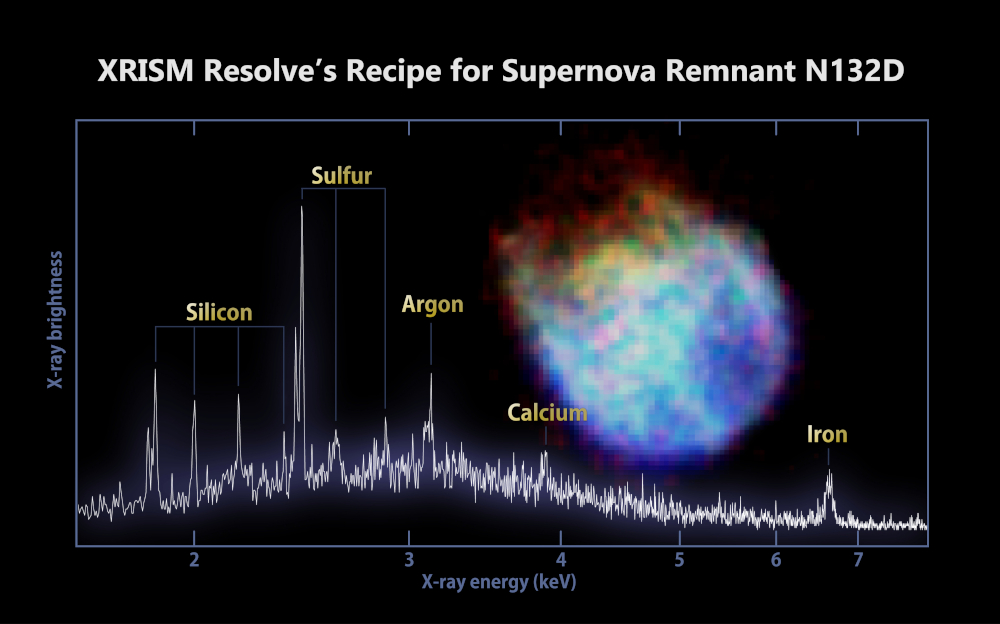
 Credit: JAXA/NASA/XRISM Resolve and Xtend
Credit: JAXA/NASA/XRISM Resolve and Xtend
Resolving the Secrets of the Universe
High-energy astronomers have a powerful new tool in space to help perfect our view of the composition and extreme dynamics of the high-energy Universe. This new tool is an X-ray space observatory, the X-Ray Imaging and Spectroscopy Mission (XRISM, pronounced "crism") launched on September 7, 2023 from Japan's Tanegashima Space Center.
The prime instrument on XRISM is an advanced spectrometer called Resolve, which determines the extremely precise energy of individual X-ray photons. Resolve does this
using a revolutionary technology called microcalorimetry to precisely measure the tiny rise in temperature which occurs when an X-ray photon deposits its energy in one of Resolve's detectors.
In order to achieve this extraordinary sensitivity, Resolve uses special superconducting detectors which need to be held near absolute zero (colder than the space through which XRISM flies). The image above, newly released by the XRISM team (JAXA, NASA and ESA) shows a first look at the unprecedented X-ray spectra that Resolve will collect when science operations begin later this year. The target of this observation is an object called N132D, the hot glowing gas left behind by the explosion of a star in the Large Magellanic Cloud (a satellite galaxy of the Milky Way). The Resolve X-ray spectrum of N132D, shown by the graph in white in the image above, dissects the brightness of the emitted X-rays by their energy. The X-ray spectrum shows a pattern of bright peaks, called emission lines, produced by atoms of silicon, sulfur, argon, calcium, and iron, and other elements. The analysis of these emission lines reveals the composition of N132D, along with the dynamics of the hot gas, which helps determine the overall energy of the explosion, and the type of star that exploded. XRISM also has a wide field X-ray imager called XTEND, which will be used to map out broad-band X-ray emission from the cosmos. The XTEND X-ray image of N132D is shown in the inset above. Scientists will be able to use Resolve and XTEND to make key observations of the high energy Universe starting this summer, after XRISM is declared fully operational and calibrated.
Published: January 8, 2024
<
HEA Dictionary ● Archive
● Search HEAPOW
● Other Languages
● HEAPOW on Facebook
● Download all Images
● Education ● HEAD
>

Each week the HEASARC
brings you new, exciting and beautiful images from X-ray and Gamma ray
astronomy. Check back each week and be sure to check out the HEAPOW archive!
Page Author: Dr. Michael F. Corcoran
Last modified Monday, 26-Feb-2024 17:47:54 EST


